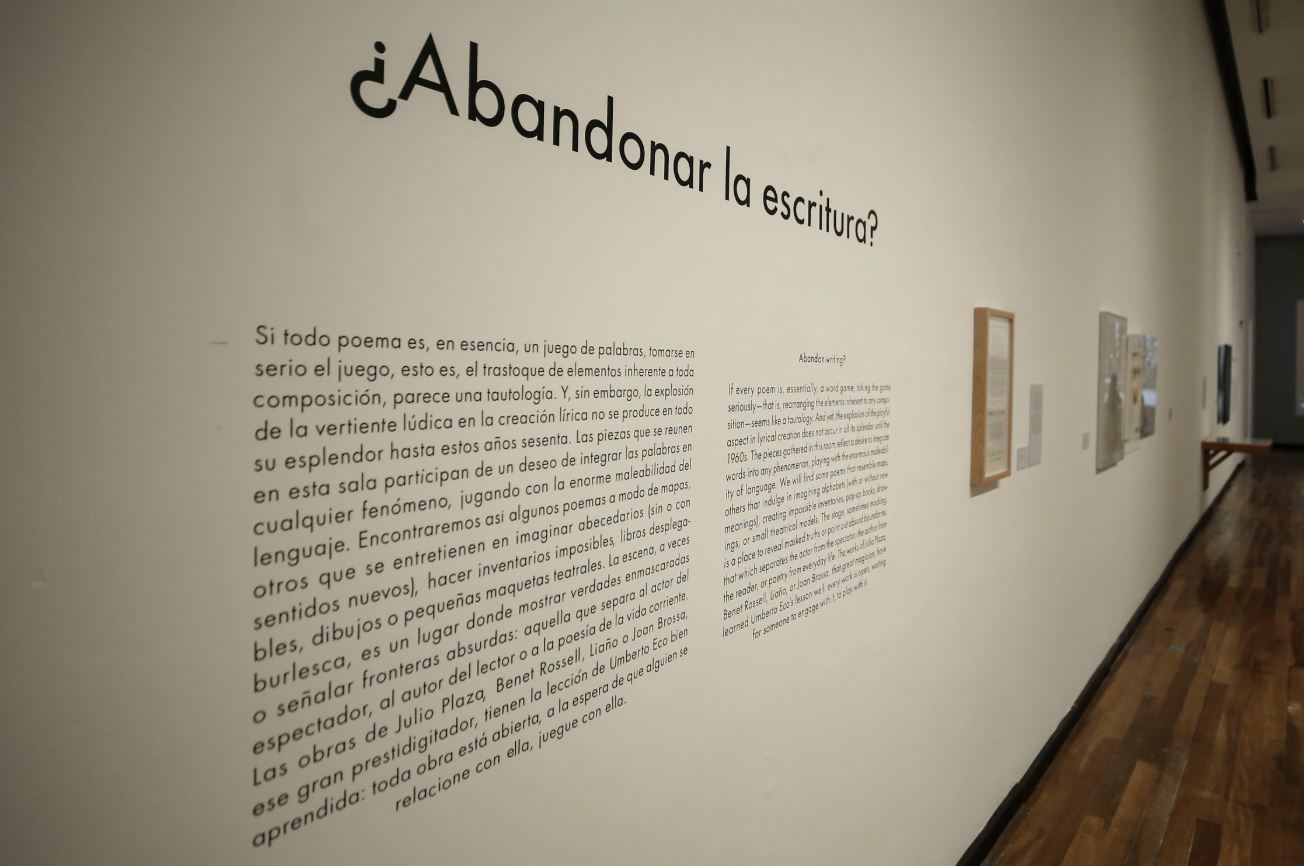Editorial
From the Guadalajara International Book Fair (FIL) to Contemporary Art

Yes, the Guadalajara International Book Fair in Mexico (FIL), after the Frankfurt Book Fair, is the most important in the world. This year, Spain was the guest country, Catalonia had also been previously invited and next year Barcelona will be. The fact is that there were a lot of people from the cultural sector in Catalonia and all over Spain. On the outbound flight, I was with the businessman and patron Lluís Coromina to present a round table to announce the Diana Zaforteza Narrative Prize, I met the journalist and art critic Ángela Molina, the cultural managers Rocio Santacruz, Gabriel Planella and Valentín Roma or the director of the Ramon Llull Institute Pere Almeda, among others.
Guadalajara is a city of one and a half million inhabitants that has nothing to envy to cities of this size. Apart from the FIL, it has different museums, art centers and galleries of interest, such as the branch of the Madrid gallery Travesia Cuatro. A visit to the exhibition at the Cabañas Museum, which was linked to the FIL, was a must. A group of curators, led by the omnipresent Manuel Borja-Villel, had inaugurated the exhibition 'Lectura por contacto. Poètica y experimentation en Espanya, 1962-1972'.

The space is imposing, a former hospice now converted into a cultural facility. Inside, among others, we find some spectacular frescoes by the renowned Mexican muralist José Clemente Orozco, full of proletarian protest, and indeed, of a poignant social realism –'El hombre en llamas', in the central dome becomes an extraordinary work- but the whole intervention is a bit gloomy, since the architectural structure that houses it is already quite sober. It must be said that in a parallel room, we discover some medium-sized paintings, colorful and of an enormous intensity and energy, a wild and primitive expressionism. But let's get back to the exhibition, a collection of art, much of it Catalan -starting with works by Joan Brossa or Antoni Tàpies- that invites us "to explore how a group of visionary artists used writing, poetry and other artistic disciplines to challenge the status quo and build a freer and more creative future", point out the curators. The works rarely dialogue with each other, a somewhat soulless spirit permeates everything, a bit of what tends to happen in these collective exhibitions. I was amused, however, to find the experimental group Zaj and I was especially excited to see a documentary by Pere Portabella, recorded in Catalan in the Barcelona of the Franco era, where authors such as Pere Quart -Joan Oliver-, with a set design by a young Frederic Amat, recite about freedom. An exhibition that replaced the show that was originally supposed to be held and that started from the collection of the Lafuente Archive in Santander to take an approach to all of Latin America regarding graphic publishing, magazines and fanzines; a proposal that we have missed due to political myopia.

After Cabañas, we had to go to another interesting facility, the Museo de Arte Zapopan (MAZ) where Ferran Barenblit, ex-MACBA, was directing the exhibition 'Fictions. Narrative in Contemporary Art'. The exhibition is an interesting totum revolutum, but a bit chaotic -again with little dialogue- of emerging/emerging authors, many of whom are Catalan or resident in the territory (Ignasí Aballí, Mabel Palacín, Gonzalo Elvira, Irene Solà, Dora Garcia...) who try to cross discourse with Mexican authors such as Mariana Castillo Deball or Andy Medina. The exhibition explores "how the analysis, interpretation and construction of stories -the deep relationship between art and literature- has gained a central place in current art. A museum that also has other interesting exhibitions such as the magnificent transdisciplinary installation 'The Golden Cage' by Yvette Mayorga, where metasurrealist paintings, a sculpture of a car - a 1974 Nissan Datsun - painted pink and almost ready to be eaten, and kitsch ceramics with iconography of well-known characters become a breath of fresh air.
 ‘Ficciones. Narratividad en el arte contemporáneo' al Museo de Arte Zapopan
‘Ficciones. Narratividad en el arte contemporáneo' al Museo de Arte Zapopan
And we arrive at the FIL. Full to the brim with children and schools, a crowd that was exciting, but also a little anxious about the inconveniences caused by mobility. Round table and presentation of the Diana Zaforteza Narrative Award, the Catalan publisher who left us too soon, at the age of 43. An award that has been won by a disruptive author who writes somewhere between theatrical prose and poetic prose with touches of well-placed visual poetry. At the table, which I have the pleasure of moderating, are Diana Zaforteza's mother, Dolores Rodés, Josep Massot, advisor to the event and a first-rate journalist and writer, and the Mexican writer and journalist Antonio Ortuño. The topics of the debate are clear: the responsibility of promoting young talent (we should also define what young means in the 21st century); the need for the awards to be published, not just to have the prize money, and the always complex relations between Spain and Latin America, sometimes with less bidirectionality than we would like.










